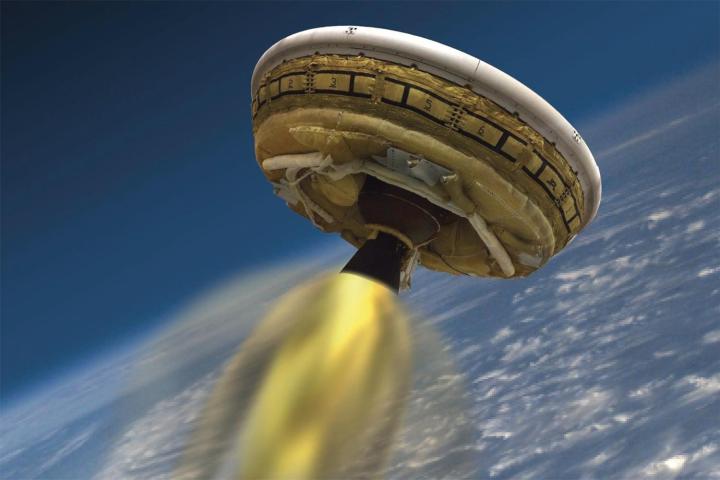
NASA, as you may or may not be aware, is dead set on putting a man on Mars. The agency’s goal is to do so before 2030 — but there’s still a lot of work to be done between then and now. Landing a rover is one thing. Safely ferrying a human to the red planet, however, is a different thing entirely. As such, NASA needs to do some additional testing before it can launch the mission — and its latest test just so happens to be live streaming on the web at this very moment
Earlier today, at about 1:30 PM eastern, the agency launched a high-altitude balloon carrying a craft called the Low Density Supersonic Decelerator (LDSD) — a large, disc-shaped reentry vehicle designed to create atmospheric drag in order to decelerate during entry through a planet’s atmosphere.
The text flight was originally scheduled to take place this past Tuesday, but was postponed multiple times due to inclement weather and unfavorable ocean conditions. Today, however, the skies above NASA’s Hawaii-based launch station were clear, and mission control gave the greenlight for launch.
After liftoff, the balloon will rise to an elevation of about 120,000 feet above sea level (which, at time of writing, is still happening), at which point the LDSD will spin itself up to about 30 RPMs for stability, fire its boosters, and blast itself up to 180,000 feet — where the Earth’s atmosphere is roughly as dense as that of Mars.
Once the craft reaches peak velocity of about Mach 4 (~2,880 miles per hour) it will deploy what NASA calls the “supersonic inflatable aerodynamic decelerator” (SIAD) to slow the craft down as it plummets back to Earth. The resulting increase in drag will help decelerate the craft down to Mach 2.35, at which point a massive parachute (the biggest one ever made, in fact) will be deployed, allowing the vehicle to make a soft splashdown in the Pacific Ocean.
If all goes well, the experiment will provide NASA with valuable data on how the craft behaves on reentry. Stay tuned for updates!



